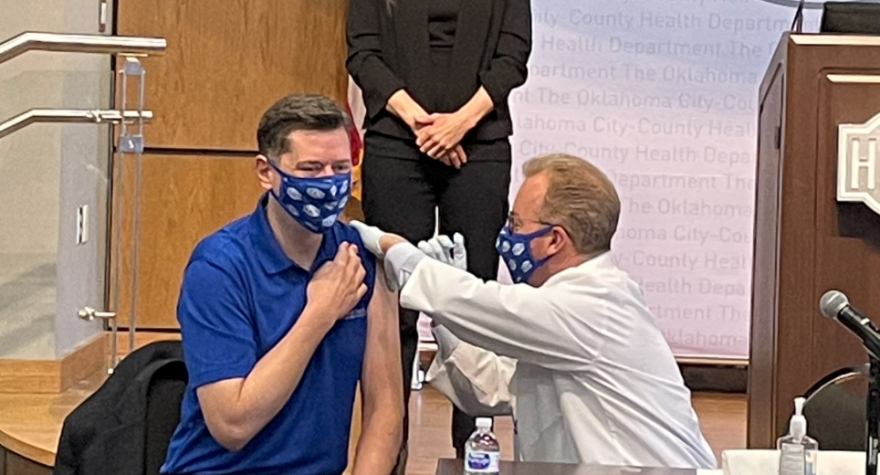OKLAHOMA CITY (AP) — The mayor of Oklahoma’s largest city publicly received his first dose of the coronavirus vaccine on Monday and urged others in the state to do the same.
“With most Oklahomans now eligible, I want our residents to hear the message that there is no need to delay your pursuit of the vaccine any longer,” Oklahoma City Mayor David Holt said in a statement after receiving his first dose of the Pfizer vaccine at the Oklahoma City-County Health Department.
Roughly 85% of Oklahoma residents are currently eligible to receive the vaccine after state health officials opened eligibility last week to workers in essential industries.
Oklahoma Gov. Kevin Stitt, who in July became the first governor in the nation to confirm testing positive for coronavirus, has not yet received a vaccine, according to his spokesman, Charlie Hannema.
Oklahoma has been successful with its vaccine rollout and currently ranks fourth in the nation with 12.8% of its population now fully vaccinated, compared to a national average of 11.1%, according to data from the U.S. Centers for Disease Control and Prevention.
Oklahoma on Monday reported no new deaths and 310 confirmed new cases of coronavirus, bringing the total number of infections to more than 432,000 while the state’s death count remained at 7,486.
Oklahoma’s seven-day rolling average of daily deaths declined over the past two weeks, from 35.29 deaths per day on Feb. 27 to 23.86 deaths per day on March 13, according to data from Johns Hopkins University. The state’s seven-day rolling average of daily new cases also declined during the same time period, from 736 to 498, Johns Hopkins data shows.





